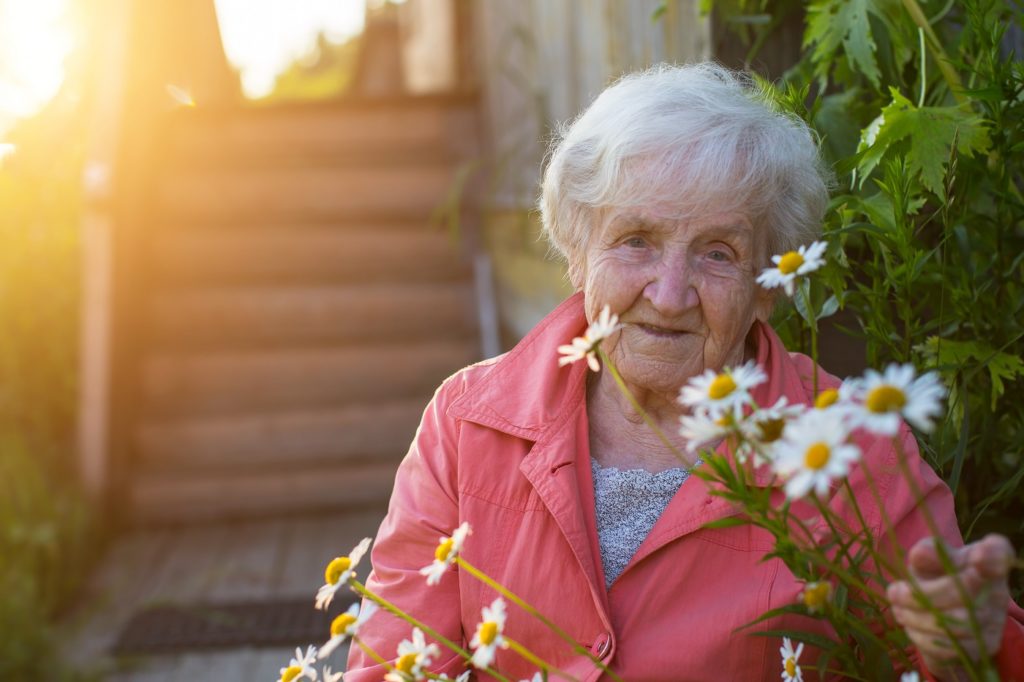In her new book, The Lost Art of Dying: Reviving Forgotten Wisdom, Dr. Lydia Dugdale engages readers in a lively discussion about life and death, providing actionable advice and digressions that stimulate personal reflection. Engrossing excursions around death lead into themes of memento mori, virtuous living, community building, ritual, and spirituality as ways to navigate death’s existential crises.
The book is divided into nine chapters with one-word titles: Death, Finitude, Community, Context, Fear, Body, Spirit, Ritual, Life. The chapters overflow with a swirl of vignettes, sociological analysis, history, philosophy, ancient diseases, and artistic allusions. At times, I got lost among the rapidly changing topics and needed to reorient myself with chapter titles. At other times, the words sent me into reverie about past encounters with death, both in my personal life and in my professional work as a physician specializing in geriatrics and substance abuse treatment. Those reactions may be the author’s intention. Dying unmoors everyone, and this book allows readers to practice that reality at their own pace.
The book begins at the hospital bed of an unconscious and much-loved dying man. His daughters want all possible lifesaving procedures. Doctors repeatedly explain their futility, but must comply with the family’s wishes. The man’s heart stops. Defibrillation, medications, and chest compressions resuscitate him. Ninety minutes later, his heart stops again. Defibrillation, medications, and chest compressions resuscitate him. Minutes later, his heart stops once more. This time, nothing revives him. His daughters grieve. The doctors suffer moral distress. Nobody thinks, “That’s the way I want to die.”
Clinical experiences like this led Dr. Dugdale, who is a Columbia University physician and a specialist in both medical ethics and the treatment of older patients, to create a compendium on dying in the ars moriendi (the art of dying) tradition. Ars moriendi literature dates back at least to medieval Europe, when survivors of the bubonic plague needed hope and instruction about what to expect, what to say, and what to do as people lay dying. Ars moriendi wisdom helped people manage common physical and emotional trials. Despair, loss of faith, and other tribulations still occurred, but loved ones knew how to respond, often with questions that resurrected hope and peace.
Start your day with Public Discourse
Sign up and get our daily essays sent straight to your inbox.That’s not to say there’s a formula to remove fear and make dying simple. No magic pill or incantation solves the mystery of death, but this new handbook shows mortals how to use medical resources and cultural practices to die better. It emphasizes our interdependence and cautions readers to avoid therapeutic obstinacy, to recognize the moral dimensions of dying, to grieve, and—in so doing—to grow.
Body Work
Medical advances lead some people to believe they can outrun death. Fear of missing a lifesaving treatment keeps doctors offering—and patients accepting—crippling treatments, despite research showing their harms. A 2010 study of Massachusetts General Hospital patients with metastatic non-small-cell lung cancer compared palliative care to standard treatment. Patients using palliative care with psychological support lived longer and reported better quality of life than those receiving standard medical care. Doctors were shocked by this and similar results with different patient populations. Ten years later, many oncologists still don’t know when or how to pivot from curative treatments to palliative care.
Chemotherapy, immunotherapy, and other technological advances can create false hopes and waste dying patients’ time and energy. Patients mistakenly equate treatment with hope. Meanwhile, disease, drug effects, fatigue, and depression impair thinking, and decision-making becomes difficult. Among the book’s resources are descriptions of resuscitation procedures, “pulling the plug” rituals, and a frailty assessment that helps people evaluate the harms and benefits of treatment.
There’s specific advice about hospitalization, too. “When death threatens,” Dugdale cautions, “we must keep our wits about us, guard against the allure of the hospital, and not rely on technology to absolve us of our fear of death.” The author describes the few times hospital deaths may be necessary, but her overriding message is that the work of dying is best done at home among supportive communities and familiar objects.
How does one find beauty in incapacity and extinction? Recognition of human dignity is the first step.
Moral Work
Taking care of the body is only part of dying well. Dr. Dugdale also addresses inevitable emotional needs and existential questions. Evocative ink drawings at the end of the book anchor her advice, as do the last words: “To die well requires that we live well, and we live best in the company of communities that help us make sense of our finitude and find beauty in decay.” Reality crashes down in that last word: “decay.” Deterioration, disintegration, bodies in the ground . . . the connotations aren’t pretty, but the instruction to find beauty in decay is clear.
How does one find beauty in incapacity and extinction? Recognition of human dignity is the first step. Discerning dignity in an incapacitated person is particularly difficult in a society that values potency and possessions as much as ours does. A friend once described her hospice work to me by saying, “There’s nothing dignified about being that sick, having someone wipe your bottom, watch you throw up.” Those experiences frighten and confuse many people who forget that dignity resides within. In truth, the undignified effects of illness may obscure human dignity, but they can never obliterate it.
Meeting messy human needs is the moral work of accompaniment. Usually, terminally ill people need others to remind them who they are, who they have been, and how they can live on after death. In The Plague, Camus describes the caregiving labor of sanitary workers. “This was not glorious work—it was moral work—and it was necessary for the community, permitting those who participated to engage their fears of death while engaging with one another.”
Engaging with dying people soon becomes difficult. Death comes too soon and takes forever to arrive. Impatience seeps into loved ones who feel pressure to fix something, demand something, be any place but with the dying person. In the 1960s, Dame Cicely Saunders founded the modern hospice movement to teach people to push past this impatience. According to Saunders, the needs of the dying are summed up in the words Jesus spoke in the Garden of Gethsemane: “Watch with me.” Caregivers are to be observant, bring skill and compassion to the bedside, but, more importantly, be there when they can do absolutely nothing.
“Doctor, can’t you do something?!” Time with young children, demented patients, addicts in withdrawal, the dying, and their families taught me to exhale . . . stay . . . focus . . . connect. When the person before you wants something you can’t give, give presence. Watch with them. Be there.
Engaging with dying people soon becomes difficult. . . . Impatience seeps into loved ones who feel pressure to fix something, demand something, be any place but with the dying person.
Grief Work
Grieving starts long before a person dies. Medieval ars moriendi literature encouraged community members to visit the sick person to mourn together while the person was still alive. People shared memories, laughed and cried, asked for and gave forgiveness. This reinforced the importance of each life and made it easier for the dying person to say goodbye to everything and everyone.
Dr. Dugdale describes intricate embalming rituals, washing rituals, and funeral traditions that maintain connection as people deal with the loss of a loved one or community member. Religious memorial services like the Jewish tradition of nine, shiva, sheloshim, and yahrzeit offer company and solace for a full year. SBNR (Spiritual But Not Religious) individuals can use resources from Freedom from Religion to plan “Secular Memorials without God.” People heal when they grieve together. Dr. Dugdale says that funerals, at their best, are theater. These performances by and for the community are designed to trigger emotions and help people see truths about life beyond themselves. Grieving with others brings growth to all.
The COVID epidemic has upended our grieving. Patients find themselves isolated at the time of death. Their loved ones feel fear, loss, and guilt throughout the illness and long after the death. Legal and public health restrictions prevent communal grieving, leaving survivors at higher risk for complicated grief reactions. Survivors can’t follow the “path of least regret.” They can’t be sure everything possible was done for the person, don’t know the last words, can’t say goodbye.
Individually and institutionally, people are working to create new memorials. During lockdown, when in-person, indoor funeral services were forbidden, I recently watched a seventy-year-old tractor slowly process my cousin’s casket into the cemetery. Cars lined the roadway to honor a fifth-generation farmer. We couldn’t hug or walk with his widow, but we were there. Organizations are trying to reach survivors with online help, too. The Center for Complicated Grief at Columbia has incorporated “Healing Milestones: What to Expect from Grief from Covid-19 Addendum” to their Grief White Paper Series. Survivors can find online bereavement support groups for survivors. COVID restrictions that limit communal grieving only prove the need for it.
Learning to die well happens when communities do the body work, moral work, and grief work described in The Lost Art of Dying: Reviving Forgotten Wisdom. Unfortunately, those who need it most aren’t likely to read the book’s hopeful message and practical advice. Terminally ill people are usually too distracted or too tired for reading. So, read this book before you need it. Read it for yourself and to share with people in your community who can’t read it. This wisdom should never again be lost or forgotten.













